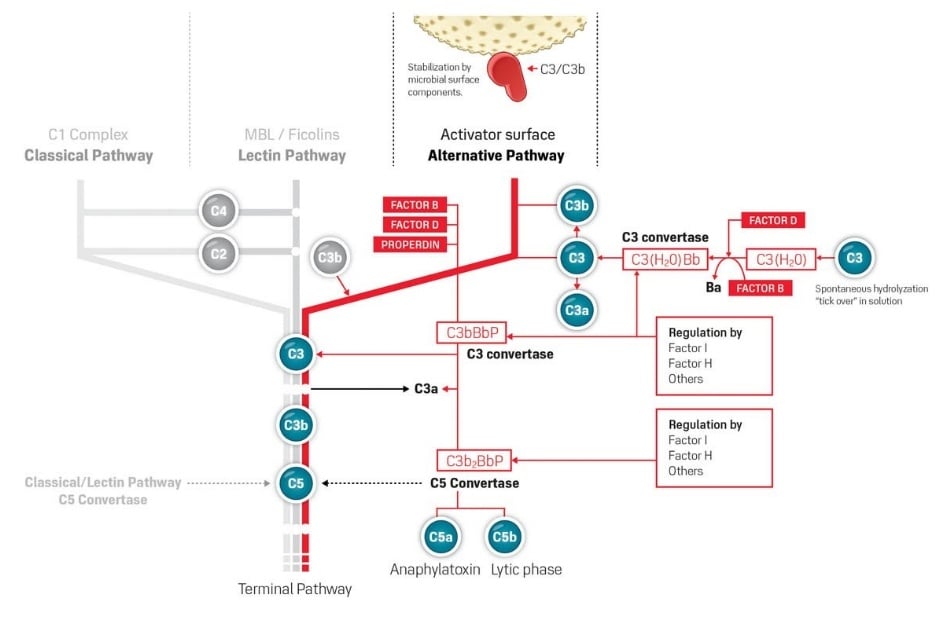- Other Products
- CCP
In contrast to the other two complement system pathways the Alternative pathway is not triggered by antibodies or specific structures on the microorganisms.
Instead this pathway is activated by the spontaneous hydrolysis of C3, which is abundant in the blood plasma to form C3(H2O). The hydrolysis changes the structure of C3 and increases its reactivity allowing for the binding of the serine protease Factor B, which in turn is cleaved by the serine protease Factor D to form Ba and Bb, respectively. Ba is released into solution but Bb forms a complex, C3(H2O)Bb, which is the initial C3 convertase of the AP which can produce reactive C3b. This C3b binds with Factor B and Factor D forming C3 convertase C3bBb. The C3bBb is a proteolytic complex that initiates the amplification process by formation of more C3b molecules, building further C3bBb convertases, resulting in the surface deposition of C3b molecules.
The reactivity of the surface attached C3b is extremely short-lived which restricts AP activation to be a local event. The C3b molecule expresses several binding sites for a number of complement components. The fate of the newly formed C3b can go in two directions.
Either it leads to the generation of C3 convertases via interactions with Factor B, Factor D and properdin, or the C3b is inactivated through a controlled mechanism involving several inhibitor components such as MCP and Factor H. Binding of another C3b-fragment to the C3-convertase of the alternative pathway creates a C5-convertase (C3b2BbP) analogous to the lectin or classical pathway. The formation of the C5 convertase initiates the final lytic process. The AP can act as a powerful amplifier of both CP and LP as the C3b formed by these pathways fuel the formation of both C3 convertase and C5 convertase, thus forming an amplification loop.
One very important matter is how the spontaneous hydrolysis/activation of C3 in plasma leads to the lysis of specific cells in the absence of antibody on the cell surface. Active C3b binds to the cell wall components and lipopolysaccharide and the constant low level of spontaneous C3b formation ensures that C3b can bind to invading cells and trigger the rest of the alternative complement pathway to lyse the cells. All of this happens in the absence of an antibody response. However, the potential activation of the alternative pathway is kept in check by a natural inhibition, factor H and factor I. Factors H and I in plasma inactivate C3b enzyme in solution but C3b on cell surfaces cannot be inactivated due to protection by the bound properdin.
This ensures that the AP is primarily inactive in plasma and specifically activated on the surface of invading cells.
